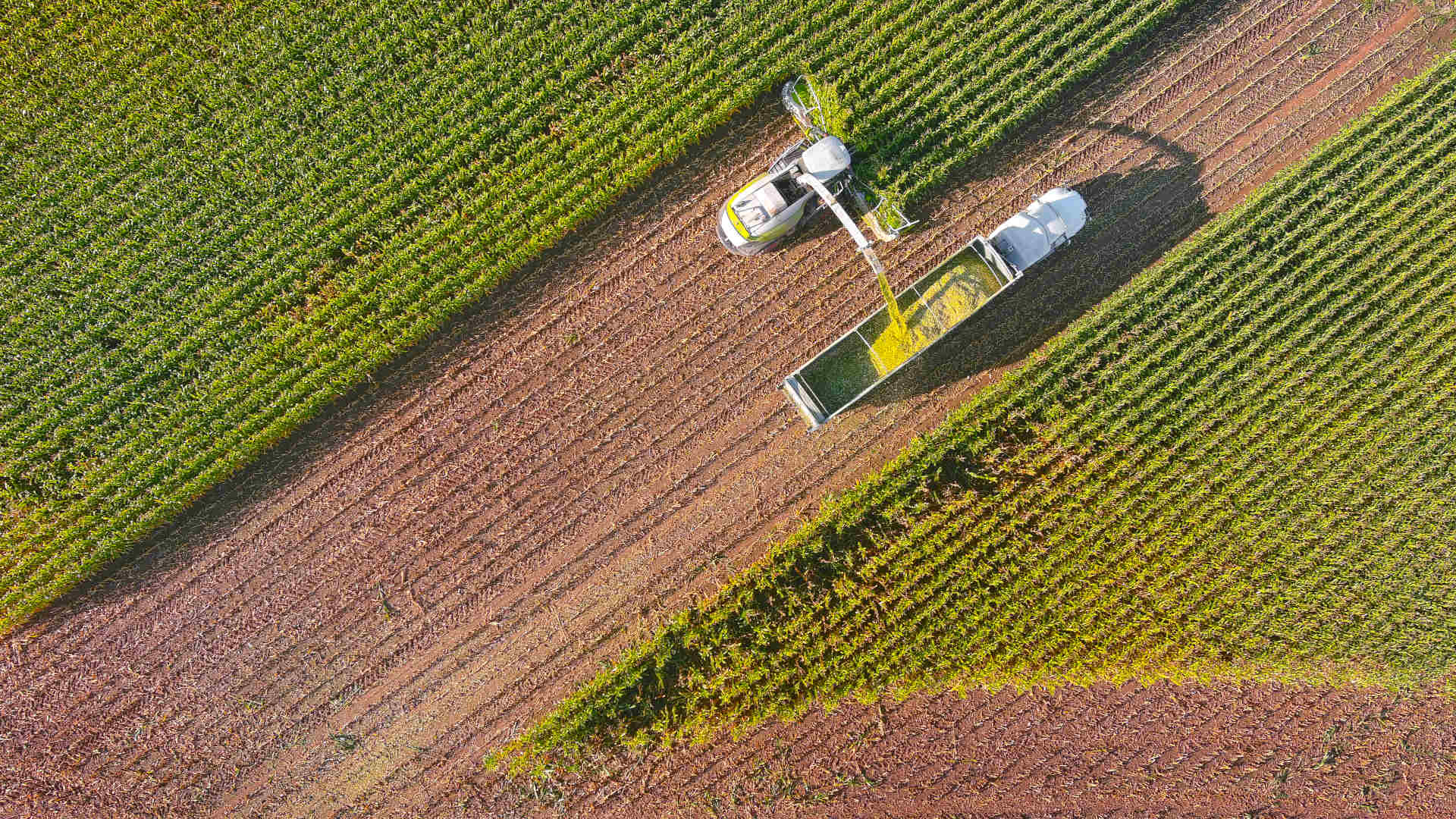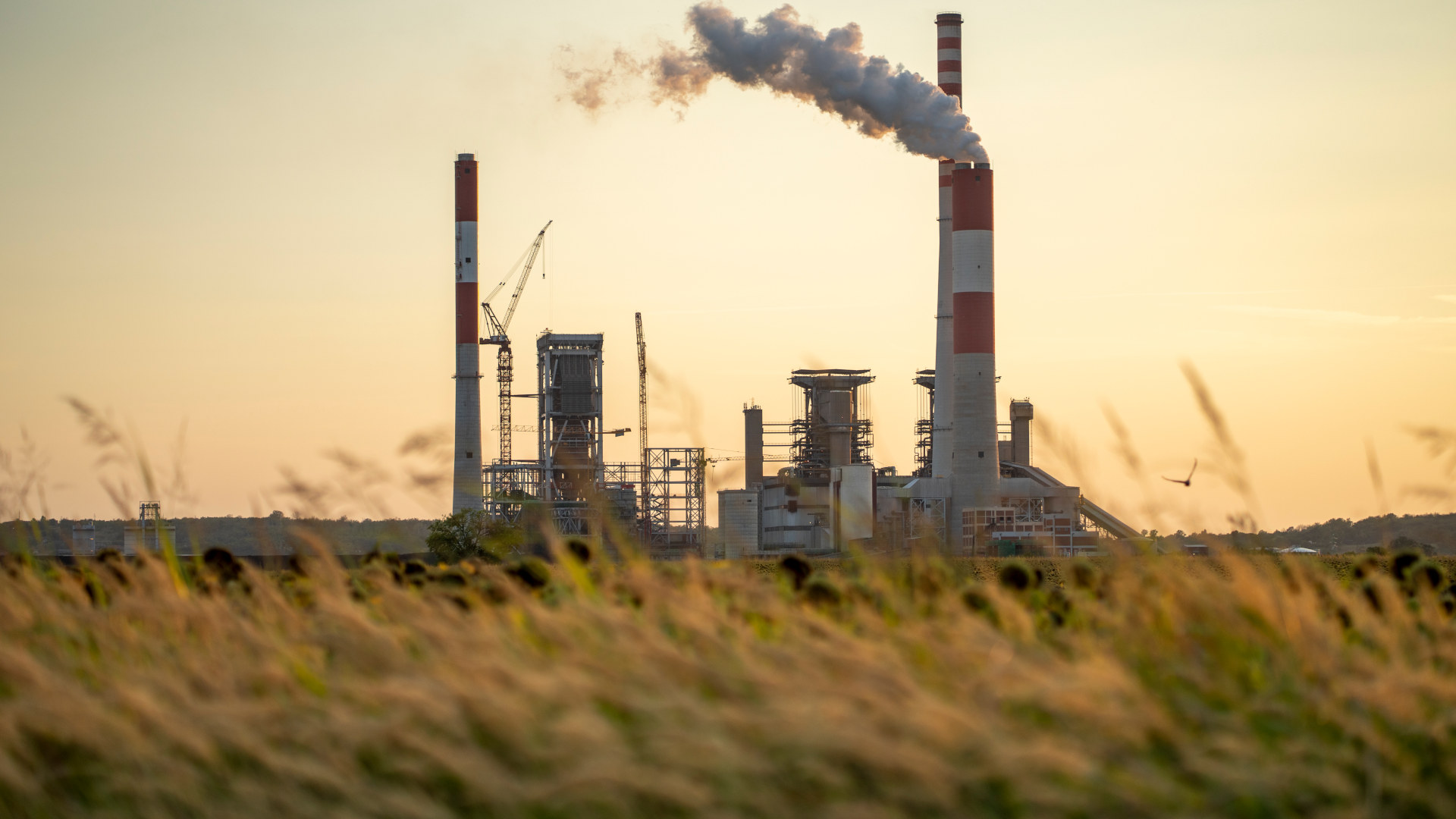Growing up in Iowa means growing up with corn. To an outsider, the scale can be overwhelming. It’s all you see for miles. For me, though, it was just normal: The fields around my family farm were my childhood playground. But one thing struck me as off: Nothing ate the corn, as we had no cows, pigs, or chickens. Each year, the harvest disappeared down the highway on semi-trucks.
And it’s where the corn ended up that’s a problem: likely, in your car’s gas tank. Now, corn ethanol is fueling the rapidly expanding geologic carbon storage industry, which is bringing a new set of problems to the Midwest.
In college, studying environmental science, I learned I grew up in the shadow of two industries — oil and agriculture. The prairies, wetlands, and oak savannas that once covered my home had been plowed under and replaced by corn and soy, subsidized by the federal government. Corn is grown so intensively that yields increase by two bushels per acre each year. The side effects include carbon emissions, topsoil depletion, and fertilizer and pesticide runoff into the former meandering streams, now ditches, in which I once played and caught crawdads. All this pollution may contribute to Iowa’s rising cancer rates.
I live in central Illinois now, a 45-minute drive from Decatur, home of ethanol giant Archer Daniels Midland (ADM) and the end destination for much of the region’s corn. But wherever you live, you’re likely filling your car with Iowa corn. The 2005 Renewable Fuel Standard, which mandated ethanol in gasoline as a transition fuel to more sustainable biofuels that never materialized, is now deeply inscribed in the Midwest’s landscape. Or, as Silvia Secchi, a natural resource economist and a professor in the Department of Geographical and Sustainability Sciences at the University of Iowa, put it: “Ethanol is a way to dispose, essentially, of an ever-growing, ever-increasing amount of corn.”
Ethanol wasn’t meant to last. But as the automotive industry embraces electrification, ethanol faces an existential crisis.
The Biden administration threw the ethanol industry a lifeline in the Inflation Reduction Act, which established an $85 per metric ton subsidy for geologic carbon sequestration. The carbon dioxide that ethanol plants produce is pretty clean — easy (and now more profitable than ever) to capture and sequester deep underground. Central Illinois, serendipitously, has some of the most favorable geology in the country for carbon sequestration, in the form of a deep saline reservoir of porous rock more than a mile below the cornfields called the Mt. Simon Sandstone. And ADM, which according to Investigate Midwest is the country’s largest agricultural emitter of CO2, is home to the nation’s first operational EPA-permitted carbon sequestration well, built more than a decade ago as a pilot project.
I’ve followed the corn across state lines. It seems I’ve also followed the carbon. Over the past 10 years, ADM says its project has sequestered 4.5 million metric tons of CO2. Now, companies have submitted plans for about 20 additional wells in Illinois to the Environmental Protection Agency for approval, which according to the Eco-Justice Collaborative, would mean scaling up sequestration by 100 times. Proposals for pipelines that would snake across the Midwest transporting carbon here also keep cropping up. Billions of dollars in tax breaks are up for grabs, although the future of the carbon sequestration subsidy is uncertain under the Trump administration. By hiding its emissions underground, the ethanol industry hopes to cling on indefinitely, qualifying as a low-carbon biofuel so it can be sold in California and, later, as an aviation fuel.
It’s an equation industry has managed to solve perfectly — a source of emissions and a way to sequester them, both sides propped up by lucrative subsidies and tied together by a pipeline of high-pressure liquified carbon dioxide.
But there’s a problem at the ADM plant, held up as an example of U.S. carbon sequestration research — it leaks. In 2024, ADM discovered 8,000 metric tons of CO2 and saline brine had migrated into an unauthorized zone. The carbon dioxide likely corroded the 13 Chrome steel pipe, thought safe for sequestration wells. ADM reported the leak to the EPA. But most locals didn’t learn of the issue until later in the year, when E&E News broke the story. In September 2024, a second monitoring well leaked, and ADM temporarily stopped injecting CO2. In response to a request for comment, ADM directed Undark to a statement on its website.
As the automotive industry embraces electrification, ethanol faces an existential crisis.
David Horn, a biology professor at Millikin University who sits on the Decatur City Council, said he was wasn’t informed of the leak and worried about the safety of the city’s water supply. The city had signed a new easement with ADM the year before the public found out the company’s well, located in the heart of Decatur, leaked CO2 deep below. “It is absolutely correct for the City Council and for the residents of Decatur to come to the conclusion that ADM company withheld relevant substantive information about the safety of these carbon sequestration activities at the very time it was negotiating an agreement for carbon sequestration activities to take place at a much larger scale,” Horn said. “And so, for that reason, the residents are right to be concerned and to be frustrated.”
Carbon sequestration might be important, but who wants to live with it?
Residents vented their concern and frustration through the Protect the Mahomet Aquifer campaign, led by the Prairie Rivers Network, Eco-Justice Collaborative, and Illinois People’s Action, all local environmental groups. The Mahomet supplies drinking water for much of central Illinois. It also happens to overlie the most favorable geology for sequestration.
As carbon sequestration scales up, four proposed projects would drill through the aquifer to Mt. Simon Sandstone. Some research shows that carbon dioxide leaks could contaminate aquifers by leaching heavy metals into water, or introduce brine from deeper saline aquifers. Environmentalists also worry about bigger unknowns — corrosion in wells, cracks in caprock layers from seismic activity, or unmapped abandoned oil wells could provide irreparable paths for the CO2 to return to the surface. And companies are incentivized by subsidies to put CO2 underground, not necessarily to keep it there, said Andrew Rehn, the Prairie Rivers Network’s climate policy director.
Along with the Eco-Justice Collaborative’s Pam Richart, Rehn is supporting a state-level bill that would ban sequestration overlying, underlying, or passing through sole-source aquifers, or aquifers that serve as the only source of drinking water for a community. Last legislative cycle, their activism helped add safeguards to carbon sequestration in Illinois through the SAFE CCS Act. Their organizations also supported moratoriums at the county level on CO2 pipelines and carbon sequestration.
Scientists can’t be sure that carbon sequestration is safe because it’s never been done on a large scale. But proponents still lay out arguments as to why they think the risks are low. Randy Locke, chief scientist for research and development at the Illinois State Geological Survey, who conducted environmental monitoring for the initial research phase of the Decatur project, emphasized the EPA permitting and reporting process worked as intended at ADM and the fluid migration has had “no impact” on drinking water. “What happens at 5,000 feet stays at 5,000 feet” said Susan D. Hovorka, a senior research scientist at the University of Texas at Austin’s Bureau of Economic Geology who’s studied carbon sequestration since 1998. Class VI wells are the latest in an EPA program that’s regulated the disposal of waste products — from radioactive chemicals to wastewater from hydraulic fracturing — underground to protect water for half a century. The technology is as routine and safe as plumbing, Hovorka said, and any sequestration well through an aquifer would be triple walled. Plus, a CO2 leak in an aquifer would just result in “soda water,” she said.
“This isn’t a ‘Well, we have to stop and rethink everything’ moment,” said Briana Schmidt, a geologist at Lawrence Livermore National Laboratory, part of a consortium of Department of Energy labs studying geologic carbon storage risks. But, she added, there is significant effort to incorporate the lessons from Decatur “as fast as possible into the new permits.” Enforcement of rules, she noted, depends on an adequately staffed EPA.
But even with regulations in place, issues can arise. Some central Illinois residents fought a yearslong court battle after a natural gas leak that affected the Mahomet, and infamously, a carbon dioxide pipeline ruptured in Satartia, Mississippi, sending residents to the hospital. But Locke, Hovorka, and other CCS researchers say some level of risk is unavoidable.
That all may be true. But if sequestration keeps moving forward in central Illinois, ethanol will remain profitable — an agricultural system that threatens water quality and quantity by tapping aquifers like the Mahomet for crop irrigation and ethanol production and polluting streams and rivers. And if political priorities change, carbon captured from ethanol plants could just as easily be pumped along pipelines for enhanced oil recovery, as it has been historically, warned Secchi. For activists, the ADM leak is a wakeup call. And, Secchi said, the opposition to carbon sequestration and pipelines in Illinois is bringing together environmentalists, Indigenous groups, farmers, and people with varying political beliefs.
It’s “proof that change can happen and new conversations can occur, and new relationships can be formed to promote alternative visions for the future,” said Secchi.
“At the local level,” she added, “I haven’t seen this level of organizing and protest.” Water is a powerful motivator.
The leak is an immediate crisis that caused a strong reaction. But perhaps the most important thing it can do is draw attention to the slow disaster unfolding all around us. Once your eyes are opened, it’s hard to look out across the fields surrounding my childhood home state and see anything else.
Christian Elliott is a science and environmental journalist based in Illinois.











